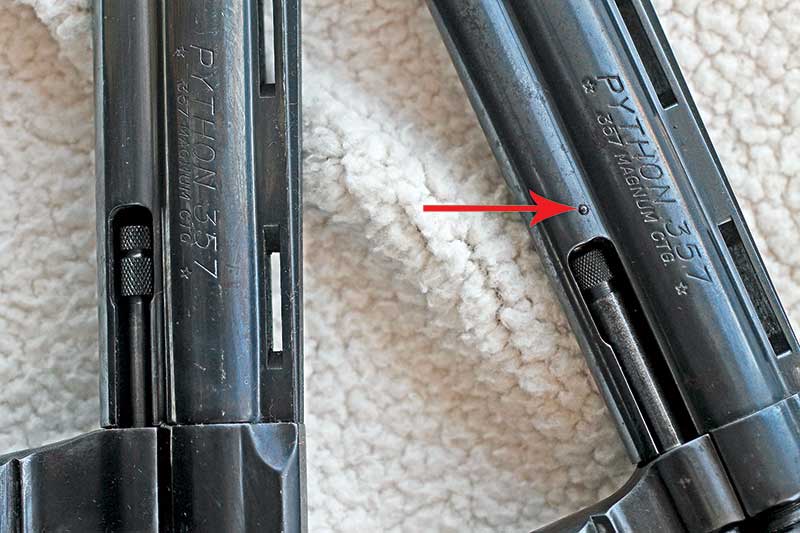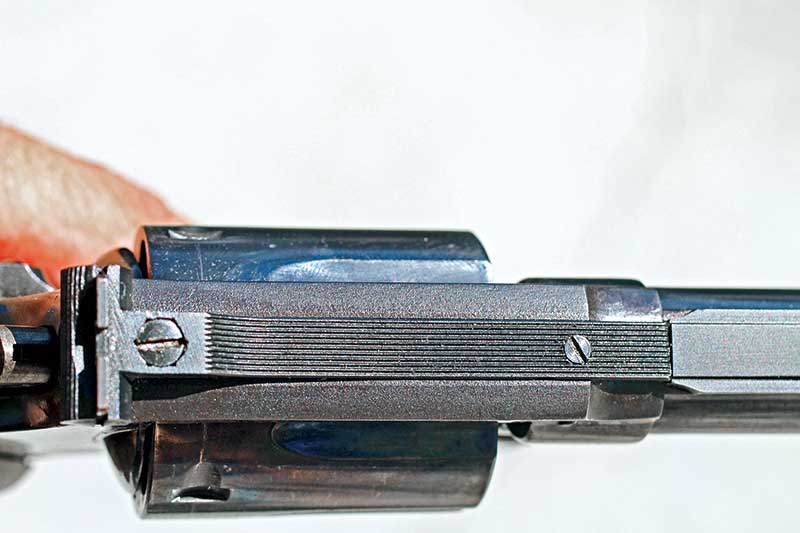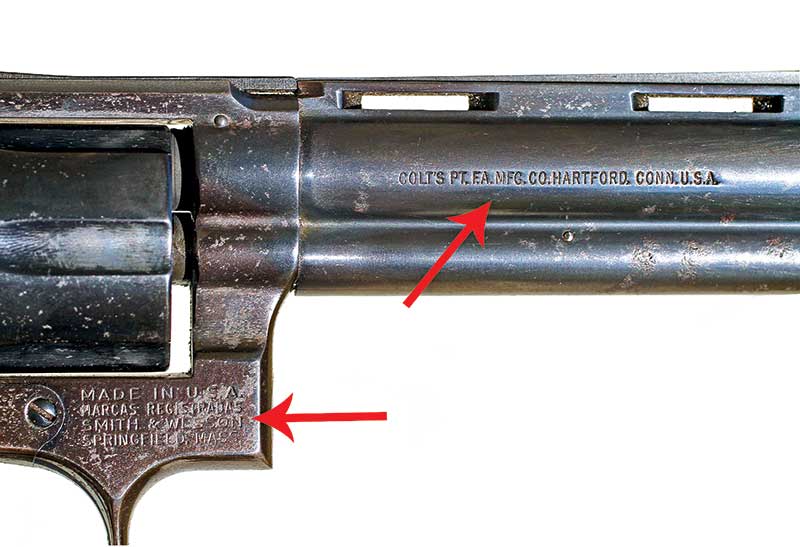Heritage Hints
I’m not sure who the first gunsmith was to do this, but I think it may have been the great Bill Davis, in California. Because the S&W has been proven to work better with front-and-back lockup since around 1902, Davis laboriously installed a spring-loaded front ejector rod lug in the Python barrels of his conversions. Some other gunsmiths installed a ball-detent where the frame meets the cylinder yoke to lock the forward end of the cylinder in place. The specimen on my desk as I write this is not marked and has no written provenance as to the gunsmith, but its barrel-mounted front lug smacks strongly of Bill Davis’ work.
For frosting on the cake, most of these guns were made on target-model Smith & Wessons with micrometer adjustable sights already installed. This one was done on a Model 13-1 “pinned and recessed” which left the factory as a fixed sight .357 Magnum revolver. That means a good deal more machining had to be done to install adjustable sights, which were expertly and seamlessly melded onto this particular revolver. It also has the wide target hammer and target trigger, not normally sold with the service-style six-shooters.
Another interesting detail emerged from the use of the fixed-sight S&W frame. The different shape of the top-strap of the frame toward the juncture of the barrel creates a gap which, between the long tang of the period S&W adjustable sight and the vent rib of the Python barrel, creates a tiny little “fourth vent” which catches the eye of knowledgeable gun people.
A much smaller number of such fusions were made with Colt Python barrels on Ruger Security Six revolvers, which inevitably became known as Cugers or Cougers. Again, Bill Davis is the gunsmith most often associated with the conversion.









